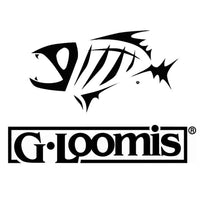First Cast to First Fish: Part 4 - Basic Rigging and Knots
Rigging in a Nutshell
 With the various parts and pieces, it is not immediately obvious how to rig a fly rod and reel. The one obvious thing is that the reel goes on the rod and the line goes on the reel. In addition to these items you will be using backing, a leader and a tippet.
With the various parts and pieces, it is not immediately obvious how to rig a fly rod and reel. The one obvious thing is that the reel goes on the rod and the line goes on the reel. In addition to these items you will be using backing, a leader and a tippet.
The backing is the first thing that attaches to your reel. Backing is generally a woven dacron material, though sometimes a gel-spun polyethylene braid, such as Cortland C16, is used to fit more backing on with a higher breaking strength. Backing serves to fill up the spool to help you get a good retrieve ratio (larger diameter = quicker retrieve) and to keep you connected to the fish when it takes out more than your 100’ or so of fly line.
We wrap the backing around the spool two or three times then tie it to itself using a uni knot. The multiple wraps keep the loop of backing from spinning as you wind it on and the uni knot cinches tighter when you put pressure on the working end of the backing.
We use 20 lb backing for rods up to 8wt and sometimes on 9wt reels as well. We use 30 lb backing or stronger gelspun backing for heavier reels. For inshore saltwater fishing, 200 yards of backing is a good guideline, and will probably be more than you will ever need. For freshwater bass or trout fishing, 100 yards is plenty. If you’re planning to fish for tarpon, 200yds is the minimum and those who fish for bluewater species, like sailfish and marlin, pack their reels with several hundred yards of backing.
Next comes the fly line, which is either attached permanently to the backing, generally with a version of the nail knot, or which is attached with a loop to loop connection. We prefer to use a loop-to-loop connection, which pairs excellent strength with the ability to easily change your line.
The next item to be added is your leader, which tapers from a thick butt to a thin tippet. The butt can be attached to your line permanently, often with a version of the nail knot, or with a loop-to-loop connection. Again, the loop to loop connection makes it easy to change your leader and is probably the best way to start out. Like the line, the leader is tapered to work effectively with the fly cast. The idea is that energy is dissipated as the diameter of the leader decreases, and the fly lands quietly on the water.

The thin end of your leader, to which your fly will be attached, is your tippet. On a one piece tapered leader there is no separation between the tippet and the rest of the leader. The tippet will be the last 18 inches or so of the leader, which should be a consistent diameter. In a knotted leader the tippet will be the thinnest segment at the end. Whether you are using a factory tapered leader or a knotted leader you can easily tie on a new tippet when the existing tippet is shortened by cutting off and tying on flies or by breaking off your fly. If your leader breaks farther back, you can add sections of monofilament in varying diameters to taper the leader down. The blood knot and the surgeon’s knot are the two most common knots for tying sections of a leader together. We suggest you take the time to learn to tie the blood knot. Another useful knot, ideal for creating a loop in the butt end of your leader, is the perfection loop.
If the species you are targeting have sharp teeth, like bluefish, or abrasive mouths, like tarpon, you will want to tie a bite tippet onto the end of your class tippet. When a bite tippet is used the class tippet is the thinnest section of the leader to which the bite tippet is attached. A bite tippet can be a 12” or so section of heavy monofilament, fluorocarbon, or wire and can be attached with a Huffnagle knot or an Albright knot.
Your fly will be tied on to the end of your tippet. If you have done some fishing in the past you can use the same knots you use to tie on lures and hooks. The most commonly used tippet to fly knot is probably the clinch knot. The clinch knot is not the strongest option but it is easy to tie, uses little material, and is a knot that most people who already do some fishing will know.
Here is a short list of some very good tippet to fly knots and when to use them. You can find instructions in a variety of books and on the Internet, including on our website.
-
Nonslip Mono Loop
This is a simple and extremely strong knot that works in a huge range of diameters. You can use it to tie on a #8 panfish popper or to attach a tarpon fly to 100# shock tippet. With really thick material you just use fewer wraps (ex. 2-3 twists for 80# material). Make sure you leave a tag end of around 1/16” when completing the knot. -
Improved Clinch Knot
This is an easy to tie tight-to-the-eye knot that many anglers already know. It is quick to learn and uses little material, meaning that you will have to replace your tippet less often. This differs from the original Clinch Knot in that the tag end is passed back through the last loop. The original Clinch Knot tends to slip unless you are tying very thin tippet to a very small hook, so be sure to use the Improved Clinch. -
Blood Knot
This is our favorite knot for attaching more tippet to the end of a leader. It can also be used for building leaders from the butt section on down. With relatively thin (less than 20 lb) material of similar diameter, start with 5 wraps of each material. Use fewer wraps with heavier material. When attaching material of widely varying diameters, the knot may not seat correctly unless you use fewer wraps in the thick material than in the thin. -
Perfection Loop
This is the ideal knot for tying a loop in the butt end of your leader. It also works well for tying flies on to heavy (30 lbs and up) bite tippet. It is not a particularly strong knot so don’t use it in thin material. Since factory tapered leaders almost always come with a loop in the butt end, this is a knot you can get away without learning for a while. It is, however, relatively easy to tie and worth spending some time on.














